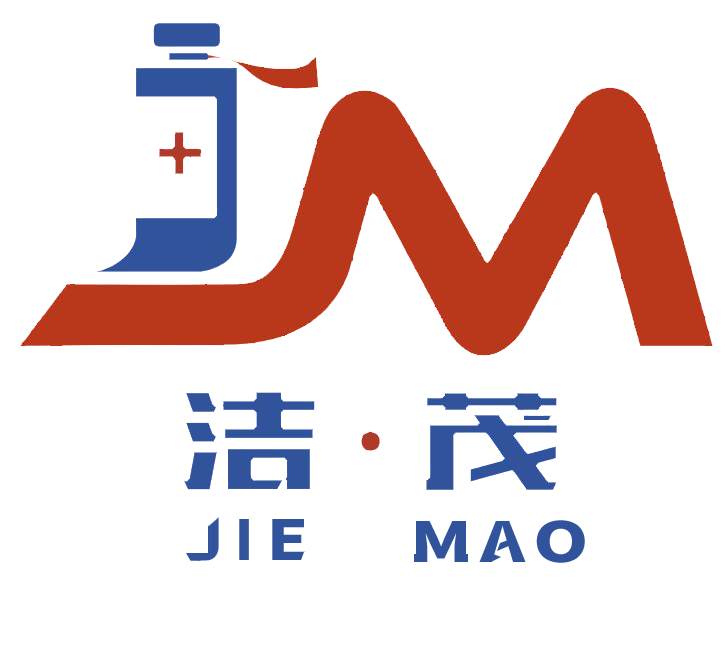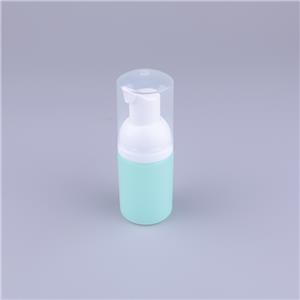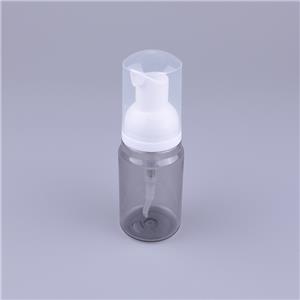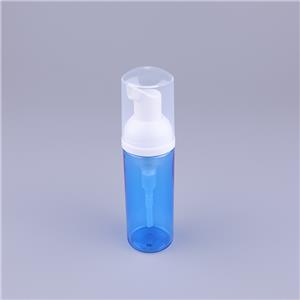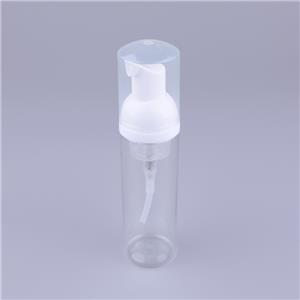- Home
- >
- News
- >
- Public Information
- >
- Polycarbonate (PC for short)
Polycarbonate (PC for short)
Polycarbonate (PC) is a linear thermoplastic engineering plastic containing carbonate groups. Since its industrialization in the 1950s, it has become an indispensable key material in high-end manufacturing due to its excellent transparency, impact resistance, and heat resistance. From transparent components in aerospace to everyday eyeglass lenses, from baby bottles to bulletproof glass, PC has demonstrated irreplaceable advantages in many fields with its unique comprehensive performance, while constantly expanding its application boundaries in environmental innovation and technological upgrades.
1、 Molecular Structure and Core Characteristics
The excellence of PC lies in its unique molecular chain structure. The benzene ring and carbonate groups contained in the repeating units form a rigid and flexible molecular skeleton: the benzene ring gives the material rigidity and heat resistance, while the ether bonds in the carbonate groups provide a certain degree of flexibility. This structure enables PC to maintain high strength while having excellent impact resistance.
Outstanding performance in mechanical properties
The impact resistance of PC is its most significant feature, with a notch impact strength of up to 60-80 kJ/m ², which is 250 times that of ordinary glass and 30 times that of PMMA. It can still maintain over 70% of its impact toughness at -40 ℃, making it widely used in scenarios that require impact resistance. Its tensile strength is 60-70MPa, bending modulus is 2200-2400MPa, and its rigidity is better than most common plastics, which can meet the mechanical requirements of structural components. However, the wear resistance of PC is poor and the friction coefficient is high (0.3-0.4), which needs to be improved by adding lubricants or blending with PTFE.
Optical and thermal performance advantages
PC has excellent transparency, with a light transmittance of up to 89% -90%, a haze of less than 1%, close to PMMA and glass, and a low transmittance for ultraviolet rays (almost no transmittance below 300nm), making it suitable for making sunscreen lenses and outdoor transparent components. Its heat distortion temperature (HDT, 1.82MPa) is 130-140 ℃, and its continuous use temperature is 120-130 ℃. It can be used for a short period of time at boiling water temperature, which is superior to materials such as ABS and PS. PC has a low coefficient of linear expansion (6-7 × 10 ⁻⁵/℃), good dimensional stability, and is suitable for the production of precision components.
Chemical and Processing Characteristics
PC has good tolerance to water, dilute acids, and salt solutions, but can be corroded by organic solvents such as ketones, esters, and aromatic hydrocarbons. Its processing performance is special, with high melt viscosity, requiring molding at high temperatures (260-300 ℃) and pressures, and strong moisture absorption (equilibrium water absorption rate of 0.3%). Before processing, it must be strictly dried (moisture content ≤ 0.005%), otherwise defects such as bubbles and silver wires may occur. PC can be molded through injection molding, extrusion, blow molding and other processes, suitable for producing transparent products with complex shapes. However, the molding shrinkage rate is low (0.5% -0.7%), and precise control of mold temperature is required to reduce internal stress.
2、 Production process and raw material sources
The production process of PC is complex and has high technical barriers. The core is to form polymer chains through the condensation reaction of bisphenol A and diphenyl carbonate. The purity of raw materials and process control directly affect product performance.
Raw material system and industrial chain
The main raw materials for PC are bisphenol A (BPA) and diphenyl carbonate (DPC), with bisphenol A accounting for over 70% of the raw material cost. It is produced by the condensation of phenol and acetone under acidic catalysts; Diphenyl carbonate is produced through the reaction of phenol with phosgene or oxidative carbonylation reaction. The use of phosgene in traditional processes poses safety hazards, and currently the environmentally friendly non phosgene method (ester exchange method) has become mainstream. Bisphenol A and diphenyl carbonate both come from the petrochemical industry chain. In recent years, progress has been made in the research and development of bio based bisphenol A, which produces phenol through biomass fermentation and provides the possibility for the greening of PC.
Comparison of mainstream production processes
There are two main processes for industrial production of PC: melt ester exchange method and interfacial condensation method. The melt ester exchange method undergoes ester exchange reaction between bisphenol A and diphenyl carbonate under high temperature (200-300 ℃) and vacuum conditions, removing small molecules of phenol to form PC melt. This process does not require solvents and has good environmental protection, but requires high equipment sealing requirements, making it suitable for producing low to medium molecular weight PC (intrinsic viscosity 0.3-0.6dL/g). The interface condensation method reacts at the interface between the aqueous and organic phases. Bisphenol A sodium salt and phosgene undergo condensation in dichloromethane, resulting in a high molecular weight product (intrinsic viscosity 0.6-1.0 dL/g). However, it requires the treatment of chlorine containing wastewater and faces high environmental pressure. Currently, it is gradually being replaced by the melting method.
After polymerization is completed, the PC melt is extruded and granulated into transparent particles, and additives such as antioxidants (to prevent high-temperature degradation), UV absorbers (to improve weather resistance), and release agents (to improve processability) are added as needed. Food grade PC requires strict control of bisphenol A residue (≤ 0.05mg/kg), while medical grade PC requires biocompatibility certification (such as USP Class VI).
3、 Classification system and modification technology
PC has formed a diversified product system through molecular weight regulation and modification technology, which can meet the performance requirements of different scenarios. The main classification methods include molecular weight, functional characteristics, and processing methods.
Basic classification and typical grades
According to the intrinsic viscosity (molecular weight index), it can be divided into low viscosity (0.3-0.5 dL/g, high flowability, suitable for thin-walled injection molding), medium viscosity (0.5-0.7 dL/g, universal scenario), and high viscosity (0.7-1.0 dL/g, high strength, suitable for extruded sheets and blow molding). According to functional characteristics, it is divided into general grade (basic performance, used for transparent components), weather resistance grade (added with ultraviolet absorbers, used for outdoor products), flame retardant grade (certified by UL94 V0 level, used for electronic devices), and medical grade (low solubility, used for medical devices).
Modification Technology and Alloy Materials
The modification technology of PC is mainly used to compensate for its poor wear resistance and insufficient chemical resistance: adding glass fiber (10% -40%) for reinforcement modification, increasing the tensile strength to 100-150MPa, and raising the hot deformation temperature to 160-180 ℃, suitable for making structural components; Wear resistant modified with lubricants such as PTFE and silicone, reducing friction coefficient by more than 50%, used for moving parts such as bearings and gears; Chemical resistant modification is blended with ABS, PBT, and other materials to enhance solvent resistance. For example, PC/ABS alloy combines the heat resistance of PC and the chemical resistance of ABS, and is widely used in automotive interiors.
PC alloy is an important direction for expanding its applications. PC/ABS alloy accounts for more than 70% of the total PC alloy, with an impact strength of 20-50kJ/m ², a hot deformation temperature of 100-120 ℃, and a lower cost than pure PC. PC/PET alloy improves oil resistance and processability, and is used for peripheral components of automotive engines; PC/PMMA alloy improves the scratch resistance of PC and is used for mobile phone cases and lenses.
4、 Diversified application areas
PC, with its combination advantages of transparency, high strength, and heat resistance, occupies a core position in fields such as electronics, automotive, medical, and construction, and is a landmark material for high-end manufacturing.
Electronics and 3C industries: equal emphasis on transparency and protection
The electronics sector is the largest market for PCs, with phone cases and laptop screen frames utilizing the impact resistance and dimensional stability of PC/ABS alloy; The front frame of the monitor and TV is made of flame-retardant PC, which meets the fire protection requirements. The transparent components of 3C products, such as protective lenses for mobile phone cameras and tablet casings, are made of scratch resistant PC (surface hardening treatment) with a light transmittance of 90% and impact resistance. In addition, LED lampshades and optical lenses also rely on the transparency and heat resistance of PC (to adapt to LED heat dissipation).
Automotive Industry: Combining Safety and Lightweighting
The application of PC in automobiles focuses on safety and transparent components: the front headlight cover is made of weather resistant PC, which has high light transmittance and resistance to gravel impact, and weighs only half of glass; The dashboard cover and windows (such as panoramic sunroof) enhance driving safety by utilizing their transparency and impact resistance. The battery casing of new energy vehicles is made of flame-retardant PC/ABS alloy, which has both insulation and fire resistance. Its weight is reduced by more than 30% compared to metal casings. Each car can use 5-15kg of PC, which is a key material for lightweighting and functional integration of automobiles.
Medical and Health Field: Safety and Cleanliness Assurance
Medical grade PC is widely used in medical devices due to its transparency, sterilization resistance, and biocompatibility, such as infusion sets and syringe casings where liquid flow is clearly visible; The shell of the blood dialyzer is resistant to high-temperature steam sterilization (121 ℃); The oxygen mask and anesthesia mask are made of soft PC blend, which fits the face and has no odor. In the field of food contact, PC water bottles and baby bottles must comply with FDA and GB 4806.6 standards, and strictly control the dissolution of bisphenol A.
Architecture and Protection: Balancing Transparency and Durability
In the field of architecture, PC boards (single-layer, double-layer hollow) are used for skylights and sound barriers, with a light transmittance of over 80% and impact resistance 200 times that of glass. They are also lightweight and easy to install. In the field of protection, bulletproof glass (PC and glass composite), safety helmets, and goggles utilize the impact resistance of PC to provide reliable protection. In addition, PC pipes are used for hot water pipelines and industrial fluid transportation due to their temperature and pressure resistance.
5、 Environmental Protection and Development Trends
The environmental friendliness of PC has long been affected by the controversy over bisphenol A. In recent years, it has been gradually resolved through technological innovation, while the industry is moving towards high-performance and green development.
Dispute and Resolution of Bisphenol A
The endocrine disruption of bisphenol A has raised concerns about the safety of PC. Currently, there are two ways to address this issue: one is to develop bisphenol A free PC, using bio based monomers such as isosorbide to replace bisphenol A, which has been commercially applied, especially in the field of infant and toddler products; The second is to optimize the production process and reduce the residual amount of bisphenol A. The migration amount of bisphenol A in food grade PC has been controlled within the safety limit (EU regulation ≤ 0.05mg/kg).
Recycling and circular economy
The physical recycling technology of PC is mature. After sorting, cleaning, crushing, and melting granulation, discarded PC products can be used to produce non food contact products (such as electrical casings and trash cans), and the blending ratio of recycled materials can reach 30% -50%. Chemical recycling decomposes PC into bisphenol A and diphenyl carbonate through depolymerization reaction, which are reused for polymerization to achieve closed-loop circulation. Currently, this technology has entered the industrial stage in Europe. The global PC recycling rate is about 15% -20%, and it is expected to increase to over 30% by 2030.
Technological innovation direction
The development of future PCs will focus on three directions: high-performance improvement through molecular design to enhance heat resistance (thermal deformation temperature exceeding 160 ℃) and chemical resistance, expanding to the field of high-temperature engineering; Functional development of antibacterial PC (with added silver ions) and thermal conductive PC (composite graphene) to meet medical and electronic heat dissipation needs; Green promotion promotes the industrialization of bio based PCs. Currently, PCs with a bio based content of 30% -50% have been commercialized, and fully bio based PCs are under development. In addition, the application of 3D printing specific PC wires in the field of personalized manufacturing is rapidly growing due to their high forming accuracy.
As a high-performance engineering plastic, the development history of PC reflects the pursuit of a comprehensive balance of "strength transparency heat resistance" in materials science. From high-end manufacturing to daily necessities, PC supports the technological progress of modern society with its unique performance. With the breakthrough of environmental protection technology and the promotion of circular economy, PC will achieve more sustainable development while maintaining its performance advantages, and continue to play the core role of high-end materials.
